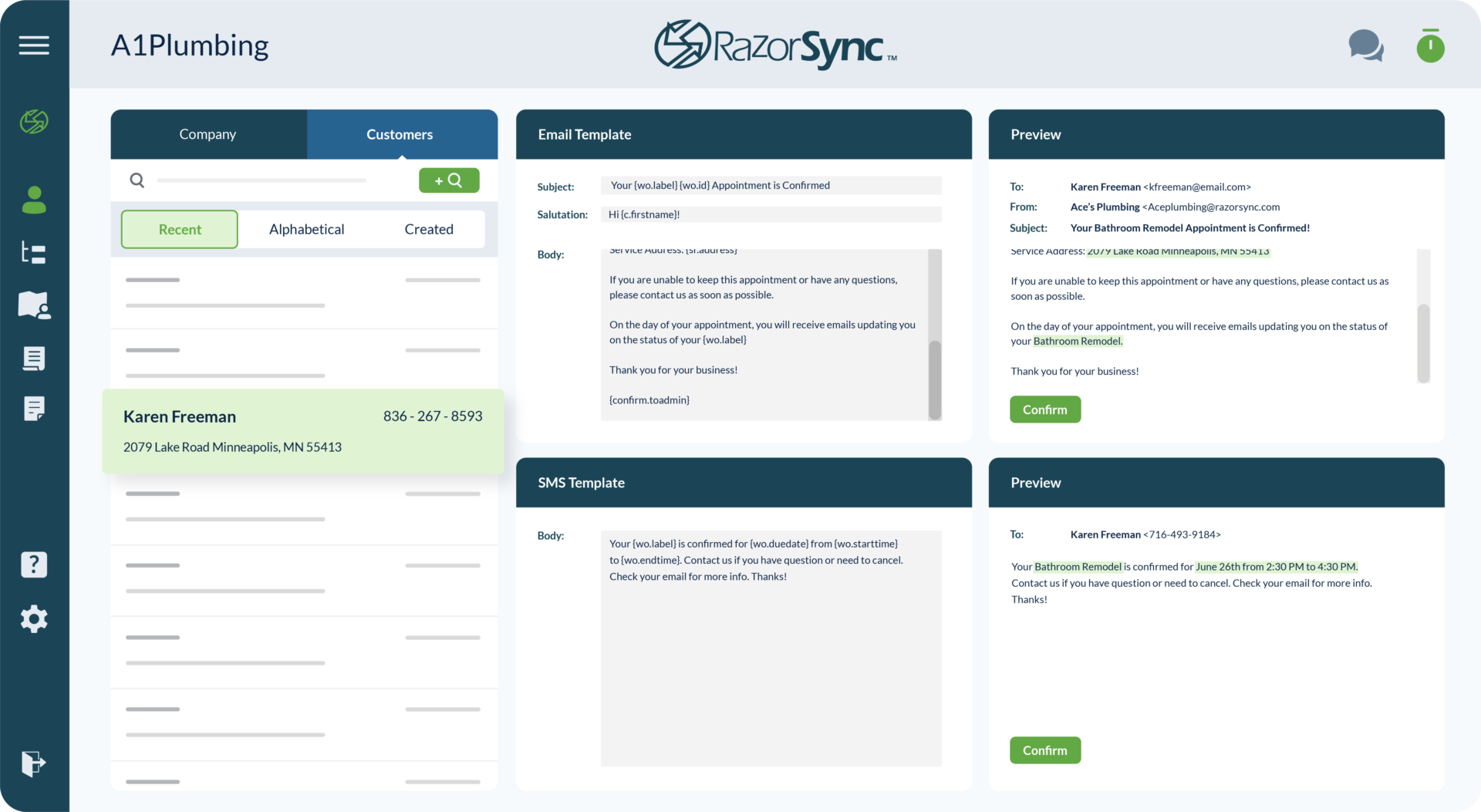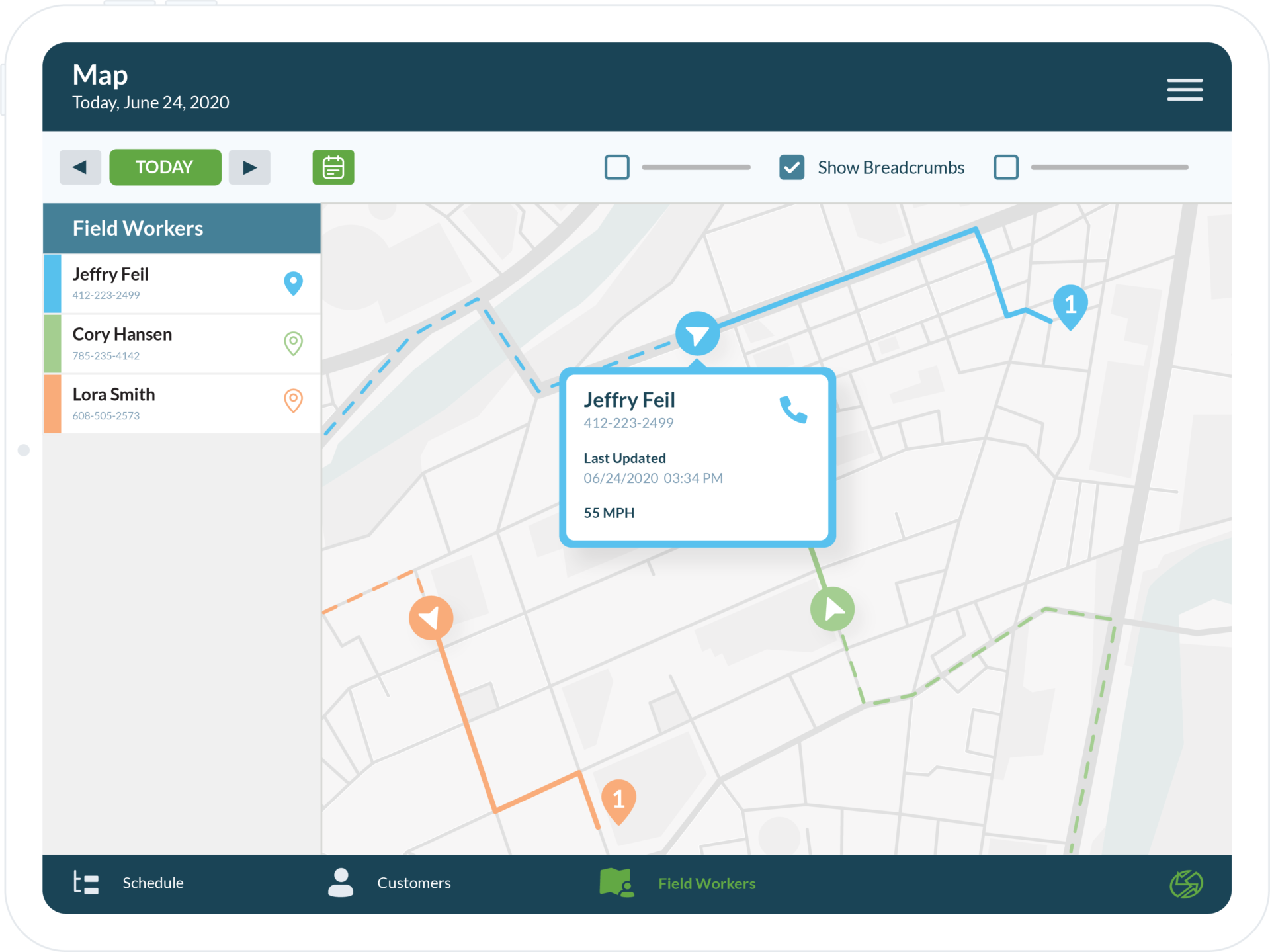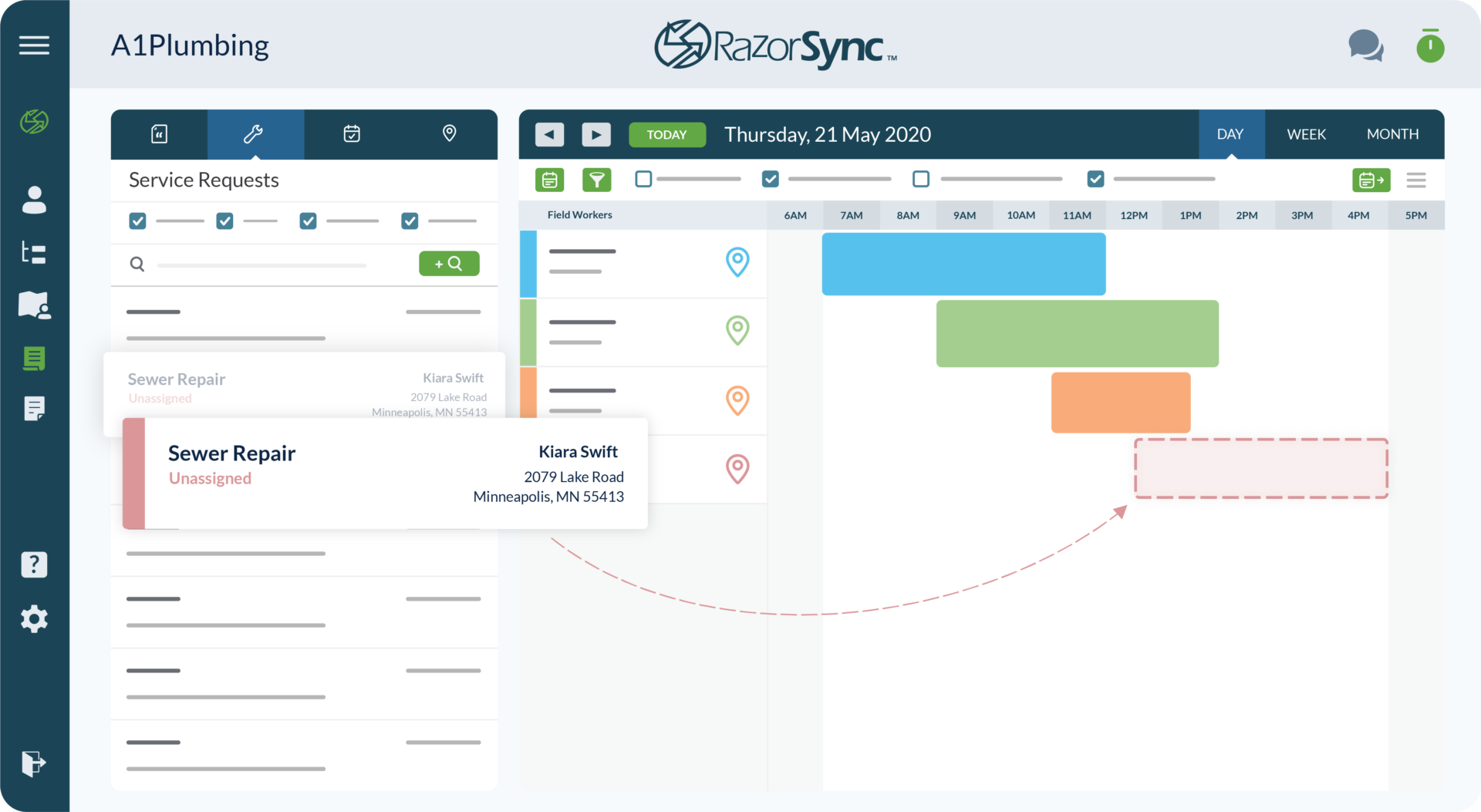Remote Work: Navigating Field Service Management
The modern workforce is more distributed than ever before. Advances in technology and shifting cultural norms have led to a massive rise in remote work...
Apr 01, 2024
# of Minutes to Read

The modern workforce is more distributed than ever before. Advances in technology and shifting cultural norms have led to a massive rise in remote work and employees working outside a central office.
This shift towards a dispersed workforce creates significant challenges for companies when it comes to managing and coordinating workers, especially those in field service roles. Field service workers travel to customer locations to provide services like repairs, installations, inspections, and more. Without being in a central office, it can be incredibly difficult to organize, connect with, and oversee field service teams.
Field service management software has become essential for businesses to navigate these hurdles. Robust platforms like RazorSync provide end-to-end solutions tailored to managing mobile and distributed workforces. The adoption of field service management tools will only grow as remote work continues to rise. The right solutions can provide businesses with the capabilities needed to successfully adapt to the distributed workforce of the future.
Benefits of Having a Remote Workforce for Field Service Teams
Organizations are increasingly recognizing the advantages of leveraging a remote workforce, particularly for field service teams. As technology continues to advance and communication channels become more streamlined, the traditional paradigm of centralized operations is being challenged. Embracing a remote workforce for field service teams offers numerous benefits that can significantly enhance operational efficiency, employee satisfaction, and overall profitability. Below are some benefits to having a remote workforce in the field service business:
Greater flexibility:
Having field service workers operating remotely provides greater flexibility and access to talent for companies. Without geographical limitations, organizations can build distributed teams with the best people for the job across multiple regions. Workers also gain the flexibility to live where they want without needing to commute or relocate.
Save time:
Field service roles require traveling to customer locations, so there is less need for field workers to go to a central office daily. By allowing remote work, companies can save significantly on real estate costs for office space, utilities, equipment, etc. Reduction in commute times also saves fuel costs and vehicle wear and tear.
Business continuity:
Going remote also aids greatly in business continuity and disaster recovery. If anything disrupts operations at a central office, field workers can continue operating from home. This became very apparent during the COVID-19 pandemic as remote field service teams maintained productivity despite lockdowns.
Field Service Management Platform and its Role in Remote Workforce Management
Field service management software is designed to help companies manage mobile workforces that provide services at customer sites. Some key features that help address remote work challenges include:
GPS tracking
Field technicians can use GPS-enabled Razorsync mobile applications that allow the office to see their location in real time. This improves scheduling efficiency and allows dynamic routing based on traffic conditions. It also provides visibility if a technician is running late for an appointment.
Automated scheduling
Scheduling algorithms can assign jobs to technicians based on factors like skills, availability, location, and parts required. This eliminates tedious manual scheduling and ensures optimal job allocation.
Inventory management
Field Management software can track parts and asset inventory across multiple warehouse locations. Technicians can check availability and reserve parts required for a job in advance. This minimizes delays related to missing parts.
Workflow automation:
Standard operating procedures can be defined in the system. Technicians are guided through workflows to ensure consistency. Checklists and automated forms simplify data collection.Together these capabilities improve productivity, accountability, and customer service for field teams. Managers have more visibility into technician workload and location. Automated scheduling handles tedious administrative tasks. Teams can collaborate effectively despite being dispersed across various field locations. This enables scaling operations efficiently as the remote workforce grows.
Mobility Through a Field Service Management Mobile App
Mobility is critical when managing a remote field services workforce. Field technicians need access to important tools and data regardless of their location. Mobile apps, offline access capabilities, and support for devices like smartphones and tablets enable them to work efficiently while out in the field.
Ease in handling workflows:
Native mobile apps allow field workers to handle their key workflows on-the-go via their mobile devices. Technicians can view and manage schedules, dispatch tickets, log labor and expenses, scan barcodes, capture customer signatures, take pictures, and access knowledge bases without needing to carry heavy laptops or return to an office.
Offline data:
Offline data access enables field workers to temporarily work offline when internet connectivity is limited at certain sites. Any data is synced automatically when connection is restored. This prevents disruptions to workflows.
Cross-platform accessibility:
Cross-platform accessibility across iOS, Android, and web apps provides flexibility to field staff to use their preferred devices. This improves adoption and utilization since workers can rely on their own familiar smartphones.
Location tracking:
Location tracking, notifications, and communication features leverage native mobile device capabilities like GPS. This further optimizes field mobility.
By embracing mobile capabilities, field service organizations remove device and location barriers to information access. This empowers the flexibility and responsiveness required for success with a remote workforce.
Strategies for Success in Remote Workforce Management
Navigating the future of remote work requires more than just implementing technology; it requires a shift in mindset and management style. Here are some strategies to ensure your remote workforce management is top-notch:
- Foster a culture of trust:
Trust your team and focus on output rather than micromanaging their every move.
- Set clear expectations:
Clearly define goals, objectives, and expectations to avoid any confusion.
- Invest in training:
Equip your team with the knowledge and skills they need to use FSM solutions effectively.
- Encourage open communication:
Create channels for open and honest communication to address issues and share successes.
- Adopt a flexible approach:
Be ready to adapt your strategies as the business environment and technologies evolve.
Overcoming Remote Work Challenges: Tips and Tricks
While managing a remote workforce presents numerous benefits, it also comes with its fair share of challenges. Here are a few tips to help you overcome them:
- Combat isolation:
Encourage virtual team-building activities and regular check-ins to maintain a sense of community.
- Ensure data security:
Implement robust security measures to protect sensitive information, especially when accessed remotely.
- Manage time zone differences:
Be mindful of time zones and strive to schedule meetings and deadlines that are convenient for everyone.
- Provide the right tools:
Equip your team with the necessary hardware and software to work efficiently from anywhere.
Key Takeaways
Navigating the future with field service management is an exciting journey, filled with opportunities to redefine what it means to work remotely. By embracing the right strategies, tools, and mindset, you can ensure that your remote workforce is not just managed but empowered to achieve great things.
Remember, the key to successful remote workforce management lies in balancing technology with humanity. It’s about creating a work environment where everyone feels connected, supported, and motivated, regardless of where they are in the world.
Now, it’s over to you. Are you ready to navigate the future of work and lead your team to new heights? With RazorSync by your side, the possibilities are endless. Start your 14-day free trial today!











